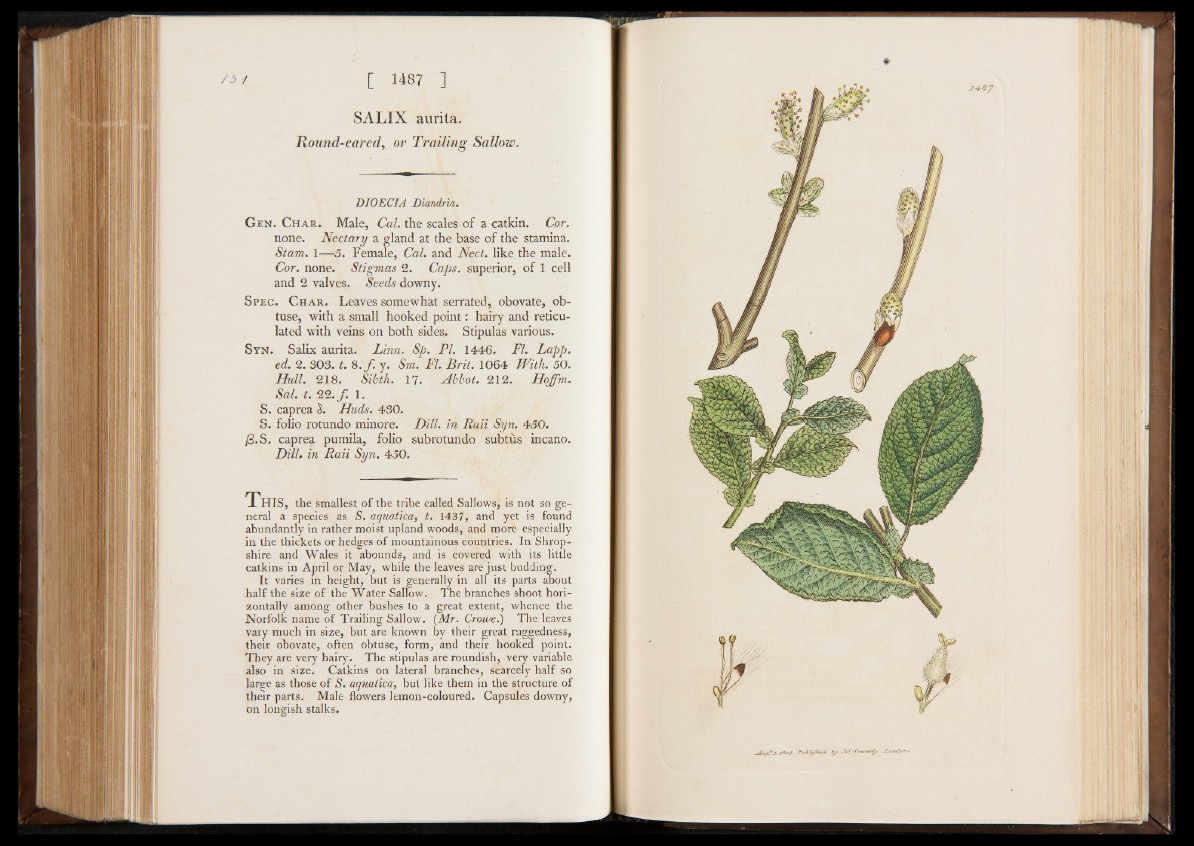
/A / [ 1487 ]
SA L IX aurita.
Hound-eared, or Trailing Sallow.
DIOECIA Diandrta.
G e n . C h a r . Male, Cal. the scales of a catkin. Cor.
none. Nectary a gland at the base of the stamina.
Stam. 1— 5. Female, Cal. and Ned. like the male.
Cor. none. Stigmas 2. Caps, superior, of 1 cell
and 2 valves. Seeds downy.
S p e c . C h a r . Leaves somewhat serrated, obovate, obtuse,
with a small hooked point : hairy and reticulated
with veins on both sides. Stipulas various.
S y n . Salix aurita. Linn. Sp. PI. 1446. FI. Lapp,
ed. 2. 303. t. 8 . f . y. Sm. FI. Brit. 1064 With. 50.
Hull. 218. Sibth. 17. Abbot. 212. Hoffm.
Sal. t. 22.f . 1.
S. caprea <5. Huds. 430.
S. folio rotundo minore. Dill, in Raii Syn. 450.
/3.S. caprea pumila, folio subrotundo subtùs incano.
Dill, in Raii Syn. 450.
T h i s , the smallest of the tribe called Sallows, is not so general
a species as S. aquatica, t. 1437, and yet is found
abundantly in rather moist upland woods, and more especially
in the thickets or hedges of mountainous countries. In Shropshire
and Wales it abounds, and is covered with its little
catkins in April or May, while the leaves are just budding.
It varies m height, but is generally in all its parts about
half the size of the Water Sallow. The branches shoot horizontally
among other bushes to a great extent, whence the
Norfolk name of Trailing Sallow. (Mr. Crowe.) The leaves
vary much in size, but are known by their great ruggedness,
their obovate, often obtuse, form, and their hooked point.
They are very hairy. The stipulas are roundish, very variable
also in size. Catkins on lateral branches, scarcely half so
large as those of S. aquatica, but like them in the structure of
their parts. Male flowers lemon-coloured. Capsules downy,
on longish stalks.